
What Is a Skills Matrix? Guide On Skills Mapping in HR

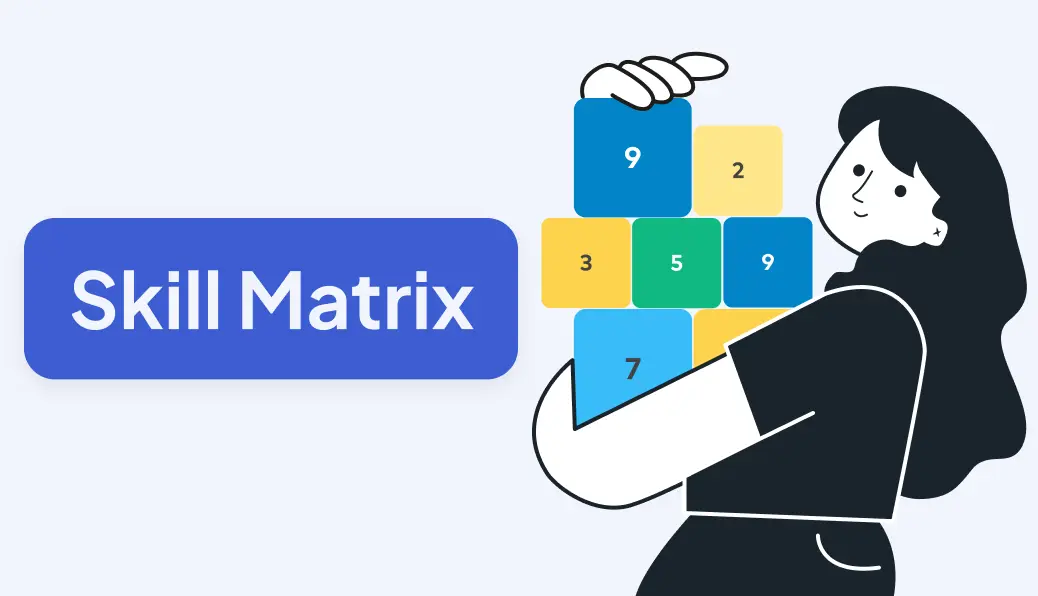
- Skills Matrix: How To Navigate Success
- Example Of a Skills Matrix
- What Are The Benefits of a Skill Matrix?
- How To Craft a Skills Matrix: What Is Skills Mapping?
- Competency Matrix Vs. Skill Matrix: Where To Draw The Line?
- Conclusion
A skills matrix is a grid or chart that maps employees’ skills and proficiency levels.
As one of the most effective tools in HR, a simple skills matrix contains the employees’ names and respective skill levels.
However, a complete skills matrix demonstrates an organization’s current skills, required skills, and missing skills.
It is typical to refer to a skills matrix as a competency matrix or capability matrix. There are, however, some slight differences that we will outline later in the article.
In this article, we will explain what is skills mapping, explore the benefits of a skill matrix, and explore what the purpose of a skills matrix in the workplace is to upgrade productivity in a workplace.
A skills matrix enhances decision-making, recruitment, and the overall organization’s status through increased clarity.
Our skill matrix software allows you boost self-organization and efficiency within organization.
Skills Matrix: How To Navigate Success
The key to having a successful business is knowing what your organization needs and what your current employees provide.
Understanding your company’s requirements and your highly demanded skills, you will surely give your future recruitment a second thought.
But what is a skills matrix, and how does it help organizations? A skills matrix is a simplification of your whole workforce’s skills and talents. Whether someone is a fast typist or great in people management, you can spot it via a skill matrix software.
A skills matrix provides a strategic map of an organization's workforce's skills, competencies, and potential.
Now, this might sound like a facile victory to smaller organizations, but imagine handling a dozen business units, each having over a couple hundred managers and employees. Madness!
We will further explore skill mapping in HR, the benefits of a skills matrix, and how to deploy it to achieve higher efficiency.
Example Of a Skills Matrix
As mentioned earlier, a simple skills matrix contains employees' names and their proficiency levels in various fields. You can see an example of a skills matrix below:

Even though the chart is basic, it obviously shows each employee's weak and strong traits.
There are also more advanced tools, such as agyleOS’ skill matrix software, that helps you manage your workforce’s entire skill sets and make better decisions for a performance peak.
This is a sample of the agyleOS skill matrix software interface:
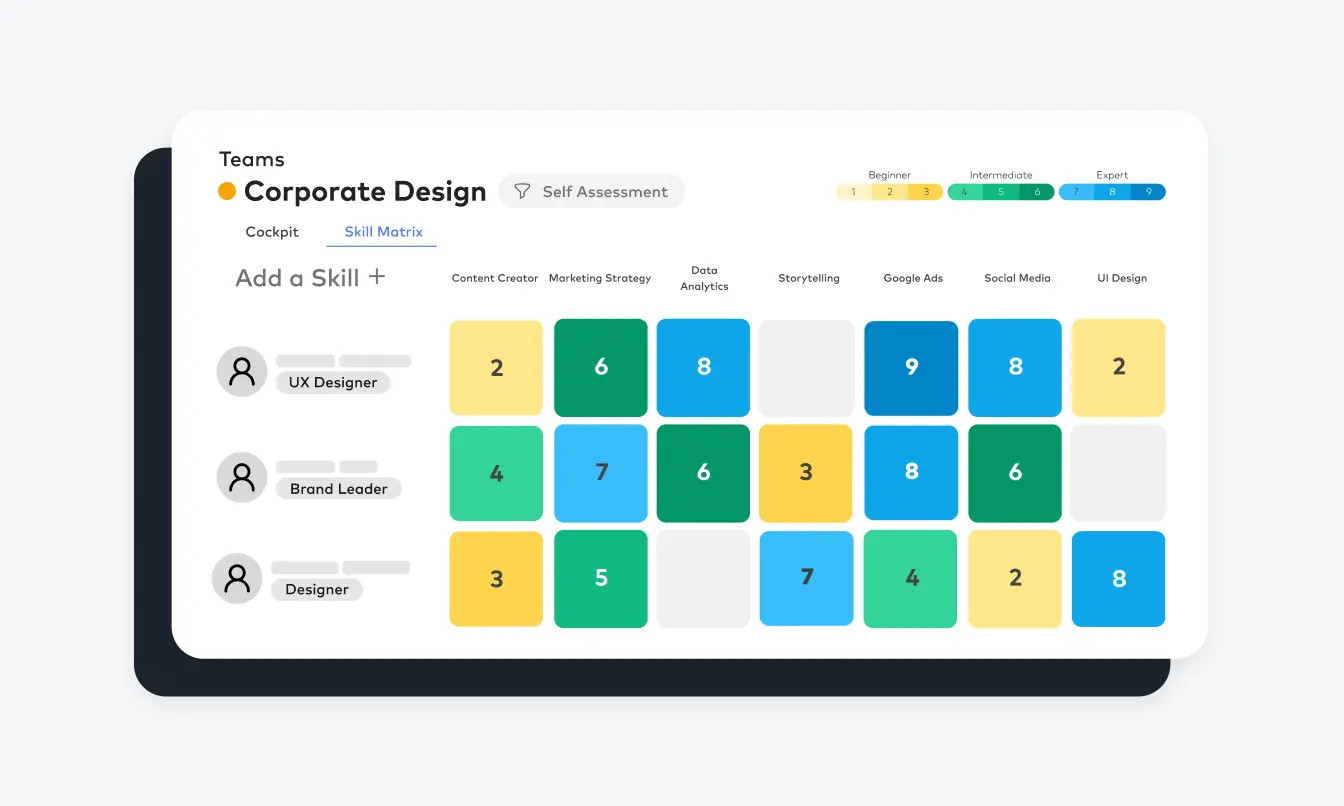
What Are The Benefits of a Skill Matrix?
A skill matrix software eases the process of skill mapping in HR, skills management, and other evaluating projects with skills analysis throughout your organization.
A skills matrix helps organizations utilize their workforce and discover their full potential.
Here are some of the unique advantages of a skills matrix:
1. Skills Gaps Assessments:
A skills matrix allows organizations to identify where their employees lack some specific skills.
Companies can easily plan development programs and growth opportunities by identifying skills gaps.
2. Identification of Required Skills:
A skills matrix allows you to comprehend what types of skills and abilities are required for a specific team or a project.
For example, a well-crafted skill matrix software for a software development team could help prioritize the necessary skills for that cross-functional team setup.
3. Identification of Available Skills:
Reaching a performance peak is not difficult if you have thoroughly examined your team’s skills and capabilities.
A skills matrix enables you to identify the existing skills in your organization and assign the best-fitting role to a candidate.
By choosing the right employees for different positions, your workforce will experience a higher work quality, which frequently results in increased productivity.
4. Specific Development Programs:
A skills matrix software provides enough data about your organization, enabling you to plan strategic steps for better performance.
By mapping your employees’ capabilities thoroughly, you can design development and training programs more quickly to fill the skill gaps and missing competencies.
5. Resource Allocation Utilized!
Assigning different positions to the most competent and suitable candidates indicates that the resources will be exploited carefully.
A skills matrix helps you decide what requirement is necessary for each employee regarding their particular skills and potential, leading to a more precise distribution of resources.
6. Enhanced Internal Mobility:
Skill matrix softwares uncover the genuine talents of employees: this is not always pleasant!
However, if an employee is not doing a sufficient job at their current position, you don’t always have to fire them.
A skills matrix software demonstrates the employee’s hidden potential and talents, leading you toward the relocation to another position or department.
Internal mobility helps your management and HR department spend less on new recruitment and utilize the existing talents.
7. Tracking The Development:
The data you have gathered from the skills matrix is used in employee training and development to upgrade the employees’ proficiency level and enthusiasm. L&D (Learning and Development) is a significant part of an employee’s life, empowering them to achieve their full potential.
Training programs are designed to fill the skills gap and improve an employee’s strengths.
We can track employee processes in different programs by utilizing the data.
These programs and their results show how valuable a skills matrix can be in tracking individual and organizational growth.
8. Succession Planning Unlocked!
Choosing a successor is considered a difficult and challenging task in many organizations.
Skills matrix softwares help you analyze and identify the potential leadership traits in your staff.
With a complete overview of your team’s talents, you can decide who could take over which role in the future.
How To Craft a Skills Matrix: What Is Skills Mapping?

A customized skills matrix allows you to make better decisions for your team and achieve higher productivity.
Skills mapping in HR is a widely used concept that can help you soar over your competitors.
We have prepared a few steps for you to design your skills matrix and get a grip on what should be included in a skills matrix.
1. Define The Key Skills.
Whether you require specific skills for a new project or just need to conduct an HR analysis, you must prepare a skills database.
Define the essential skills your team members must possess and outline the specific characteristics of each position.
Having a clear and thorough skills inventory will make you proceed with the following steps more smoothly.
Here are some tips when gathering a skills database:
- Don’t Underestimate! Soft skills like communication, leadership, teamwork, and such are just as critical as technical skills. Don’t overrule the soft skills while collecting the data.
- Start with the most relevant skills. This tip allows you to have more worthwhile data in a shorter period.
- Ask for guidance! You may miss a few items even though you’re the one conducting the skills search. Ask the experienced employees and the heads of departments about the required qualifications to ensure you have enlisted everything.
Creating a thorough database requires effort. If you don’t have enough time or consider it too challenging, we suggest you use different services such as agyleOS.
We provide you with easy-to-use tools to collect data and skill matrix software for further steps.
2. Generate a Grading Approach.
A grading system is used in this step to evaluate different levels of proficiency. You can customize your approach to suit your company best.
However, there are also some basic systems you can use, such as:
- Likert Scale - This grading approach is not commonly used to collect skills matrix data. However, it is the most widely used approach to scaling responses in research surveys.
- Number Scaling (5-point scale, 9-point scale, etc.)
Regardless of your grading system, you must assign a definition to each variable. For example, in scaling systems, the variable is a number.
Suppose you chose a 5-point grading system; in that case, the scoring approach and definitions are:
1 = Not experienced at all.
2 = Somewhat trained.
3 = Actively performing under supervision.
4 = No supervision required.
5 = Can train other employees.
The 9-point grading system, however, has a broader spectrum, resulting in a more comprehensive and thorough assessment.
A 9-point scale is usually interpreted as below:
1= The least experienced.
2= Unacceptable experience but somewhat trained.
3= Performing under particular circumstances.
4= Satisfying performance in most circumstances.
5= Actively and sufficiently performing.
6= Experience and performance are above average.
7= Performing under no supervision.
8= Experienced enough to lead a small team.
9= The most experienced and can train others.
The basic grading systems are effective. However, it is possible that they fall short of specific planning for larger companies and challenging environments.
Why do we use a 9-point grading system at agyleOS?🤔
A 9-point grading system has a broad spectrum of ratings while avoiding confusion in decision-making.
Suppose you want to promote one employee out of 10 candidates. In that case, a 5-point grading system will likely give you over five candidates with a rating of 2 to 3.
Whereas a 9-point grading system divides those candidates between 4 to 8, making your decision simpler and much more effective.
3. Assess The Existing Skills.

This step requires an objective evaluation of each employee’s skills and capabilities.
There are several approaches to thoroughly reviewing an individual’s performance:
- Self-inquiry: Ask your employee to rate and give themself a performance review.
- Previous Records: Explore the past performance reviews and documents.
- Ask For Manager Evaluation
- Ask For a Team Member/Colleague Evaluation
- Run a Test: Look for the necessary hard or soft skills with a quick test and assess an employee’s proficiency level.
360-Degree Feedback Tool: Having real-time assessments and dynamic skill monitoring, a 360-degree feedback tool is the best and most thorough approach to evaluating an employee.
In a 360-degree feedback session, not only the employee themself is getting interviewed but also their peers, co-workers, subordinates, leaders, etc., resulting in a reliable skills inventory for a detailed skills matrix.
A performance review tool allows you to have a holistic and detailed view of your workforce and organization.
You don’t need to exploit all the approaches. Choose a few and combine them to create a well-designed method for your company’s status.
The fastest combo is a self-assessment and a certificate check: Letting your employee express genuine sentiments about their skills, besides a quick quality check, is your way to go for the fastest results.
🥇 Pro Tip: Ask About Their Interests!
A skills matrix is not only a tool for existing and missing talents but also a powerful approach to demonstrating the “could-be” skills.
By asking your employees about their favorite skills, strong areas, and improvable traits, you have enough data for a skills matrix to show you what development programs and training are necessary for your organization.
The most essential part of this step is to have a thorough understanding of everyone’s skills and proficiency levels.
A competent skill matrix software, such as agyleOS, typically runs 360-degree feedback sessions to collect every existing skill in an organization; then, you can start allocating the data into a customized yet comprehensible matrix.
4. Populate The Matrix.
Develop a table or a grid to plot your data in the matrix. The easiest approach to creating a skills matrix is using an Excel sheet.
However, conventional matrix templates are not as visually appealing and maintainable as modern skill matrix tools.
Also, interactivity is limited, and as we all know, Excel files soon lose their value when the populated data set scales with growing team size.
The following steps will guide you through a skills matrix:
- Put the categorized skills in vertical/horizontal blocks.
- Put the employees' names on the opposing axis.
- Fill the corresponding blocks with the collected data: proficiency levels, interests, etc.
- Create a small guide for the skill matrix so everyone can use your data effectively.
If populating a skills matrix sounds like a daunting task, you can easily use a variety of our tools at agyleOS to have a well-designed and customized matrix.
Why Should You Choose agyleOS Over The Conventional Skills Matrix?
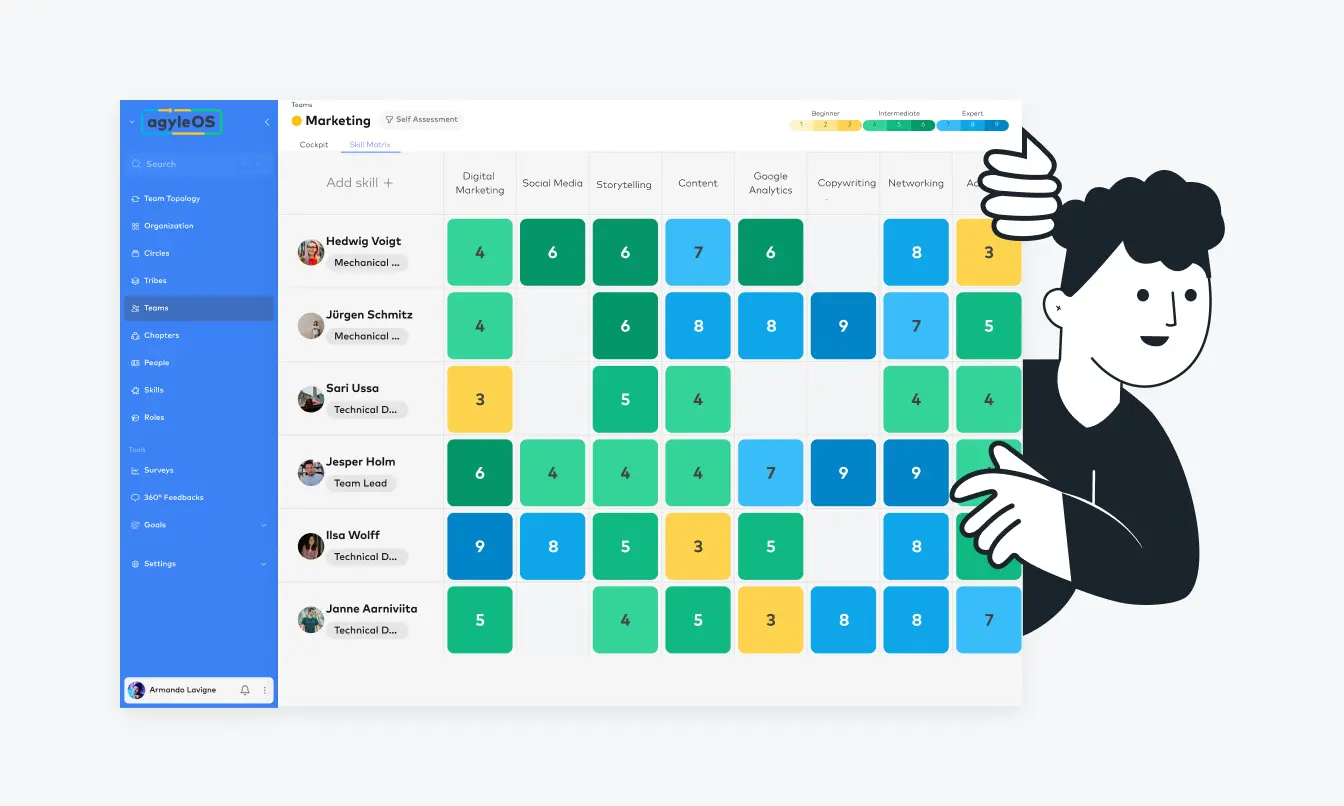
At agyleOS, we help you create an organized yet thorough database of all your employees’ skills.
Mapping out your team’s competency is a practical approach to having a more functioning organization.
The typical skills matrix may be simple to make. It is, however, often chaos:
- Complication - the matrix can get messy and incomprehensible, especially for larger organizations with more employees.
- Confusing and Time-Consuming - Whether you need to make a quick decision about a position or require the data on a specific employee, you will have trouble finding every column and row to check the ratings.
But with a comprehensible skill matrix software, all this messy fuss will disappear.
A skills matrix software provides you with organized results and readable charts so you can make the best decisions for your organization quickly.
5. Analyze The Skills Matrix.
This step is where the magic happens!
Creating a skills matrix alone is not a solution to your problems; having an analytical input to your employees’ trends, skills, and skills gaps, however, will do plenty.
Analyzing the skills matrix helps you in future recruitment, planning training programs, offering career development, HR research, etc.
But how should you define the competency of a team for a project?
Expectations! The ideal team has an utterly competent leader along with skilled and productive employees.
Each team member has specific qualifications that justify their place in a project.
Now, in reality, we often don’t have such a team. However, by comparing our existing team’s qualifications, leader’s characteristics, and employees’ skills with the ones of the ideal team, we will have a satisfying understanding of what our team needs to be sufficient for a specific project.
6. Strategic Planning Begun!
After evaluating your needs and requirements as a team, it is time to start planning for training programs and development opportunities.
By deploying the collected insights, you will create a more positive and resilient organization where everyone can flourish and improve themselves.
A skills matrix is not just about tracking abilities; it's about empowering individuals to reach their full potential and contribute meaningfully to the organization's success.
How can you organize your skill matrix results?
Of course, each company is different from the other, and they hold various positions.
However, when it comes to managing numerous employees, it never hurts to get help! You can get more information on skills management features and benefits in our “What is Skills Management?” article
A skill management software helps you organize, analyze, and plan your organizational success.
Competency Matrix Vs. Skill Matrix: Where To Draw The Line?
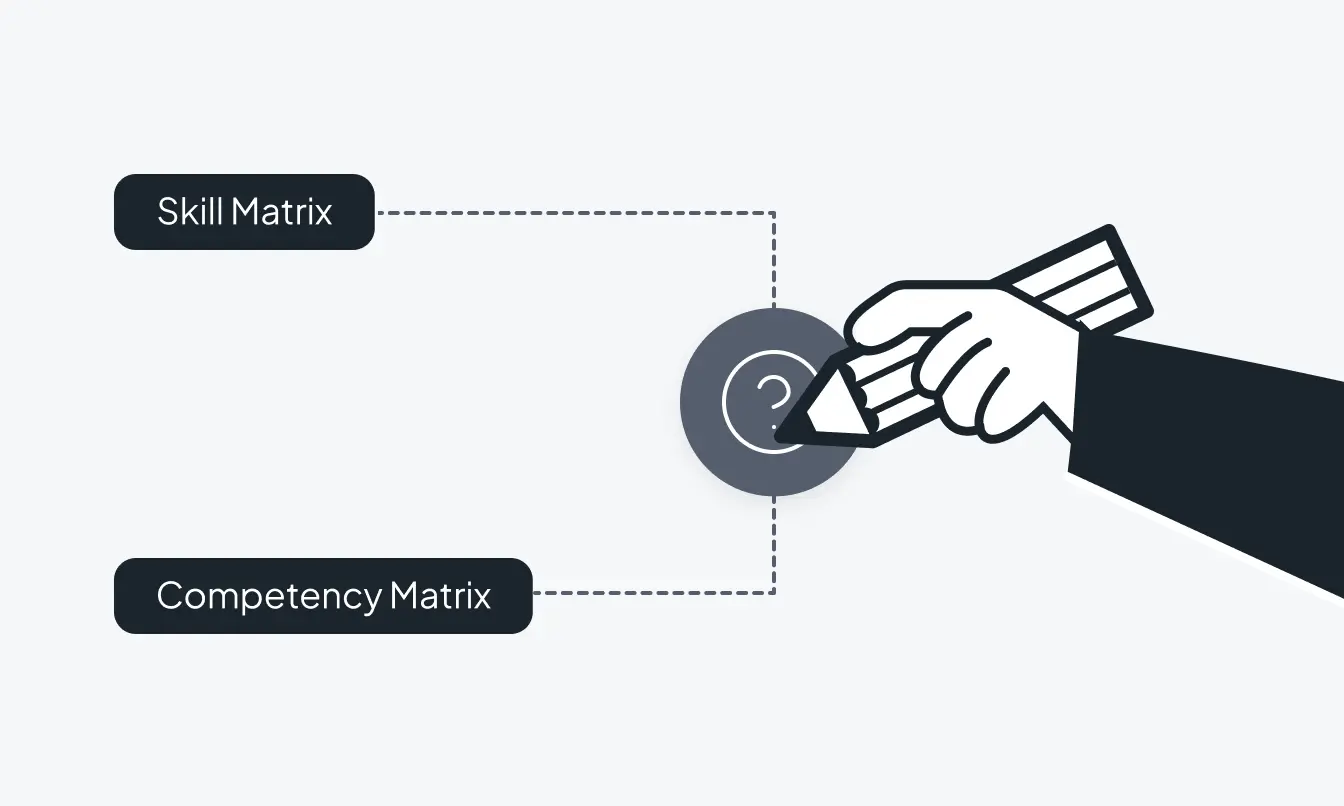
Even though the purpose and notion behind these HR matrices are the same and the names are somewhat interchangeable, there is a slight difference that should not be neglected: the components and where to apply them!
Skills Matrix:
- A skill matrix specifically focuses on the technical skills and abilities required for a job or project. It outlines qualifications needed for a particular task or project, such as programming languages, SEO techniques, etc.
- It is used to assess an individual's skill level in each professional area and ensure that the team has the necessary skills to successfully complete the project.
- A skills matrix is applicable within a wide range of organizations. From large corporations to smaller teams, you can use a skill matrix software to upgrade your employee engagement and productivity.
Competency Matrix:
- A competency matrix contains your whole operation’s knowledge, different types of skills, attitudes, etc. It outlines the different competencies needed for success in a particular role, such as leadership, communication, technical skills, etc.
- A competency matrix is used to evaluate an individual's proficiency level in each position-related area and identify rooms for development.
Case Study 👇
🛠 Skills Matrix:
Employee A is being reviewed as a candidate for a website development project at their company.
This project requires team members to be evaluated based on their technical skills such as HTML/CSS, JavaScript, React, Next.js, and Tailwind.
Employee A’s skills in a 9-point grading system:
1. HTML/CSS: 8
2. JavaScript: 8
3. React: 9
4. Next.js: 7
5. Tailwind: 6
A skills matrix allows the team leader to decide which employee is more suitable for each role and how proficient they are in each area to achieve success in a project.
⚙️ Competency Matrix:
Employee B is being reviewed for a Sales Manager position at their organization.
The job role requires specific qualifications such as leadership, communication, strategic thinking, relationship building, and problem-solving.
Employee B’s competencies and skills in a 9-point grading system:
1. Leadership: 7
2. Communication: 8
3. Strategic Thinking: 6
4. Relationship Building: 7
5. Problem-Solving: 5
A competency matrix, in this case, allows the management to decide who would fit better in a sales manager position, regarding their knowledge, technical skills, and behavior.
Indisputably, a skills matrix is a fraction of a competency matrix, making the competency matrix more suitable for management to apply for thorough assessment, future recruitment, and other organizational affairs.
The Skill matrix software within agyleOS can provide you with both skills matrix and competency matrix services, so that you can effectively evaluate individuals or teams based on a combination of competencies and technical skills to ensure they have the right capabilities for success in their roles or projects.
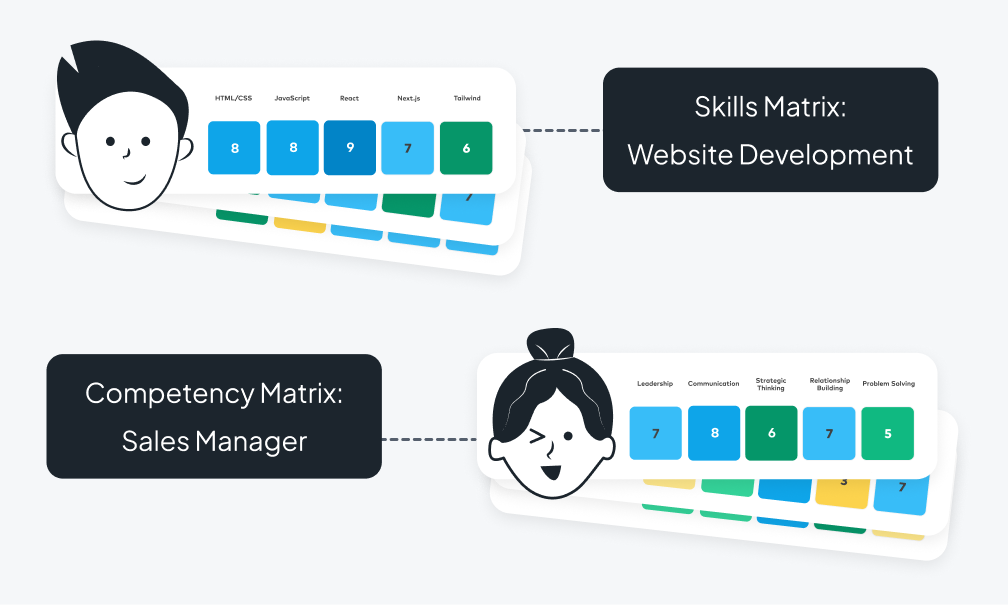
Conclusion
The skills matrix is a well-known technique many organizations have exploited to upgrade their workforce status, productivity, profitability, and so on.
We explored what potential a skills matrix bears for your company, its benefits and importance, how to deploy a sufficient software solution for the skills matrix and more.
With the proper application of a skills matrix software, you will inevitably achieve greater success and employee engagement since you utilize every field in your organization.
A skills matrix is a beacon of innovation in talent acquisition, offering a strategic framework to elevate performance and drive organizational excellence.
Embrace the insights of a skills matrix to embark on your experience towards creating a skilled and powerful staff that reflects your organization’s new heights of success.
By submitting this form, I confirm that I have read the privacy policy and that I consent to the processing of my personal data by agyleOS for the purposes stated. In the event of consent, I can revoke my consent at any time. Furthermore, by submitting the form, I agree to the general terms and conditions.
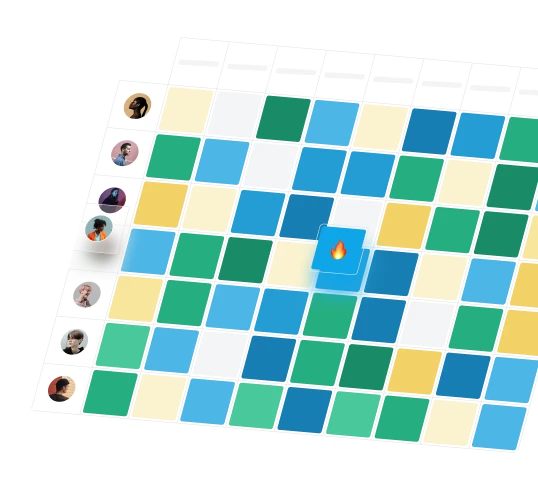
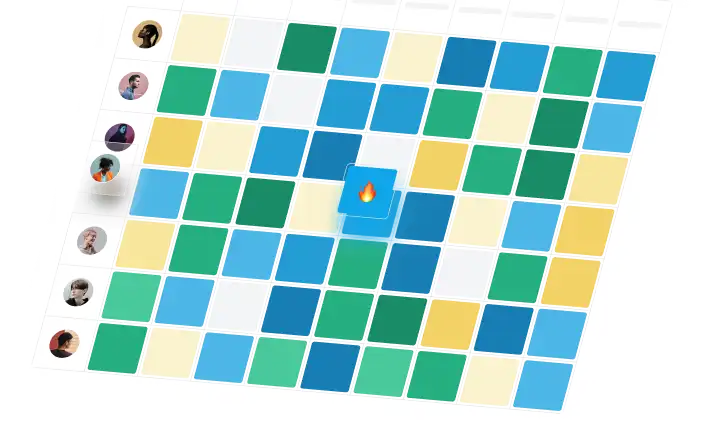
- Product
- Resources
- Compare
- Company
